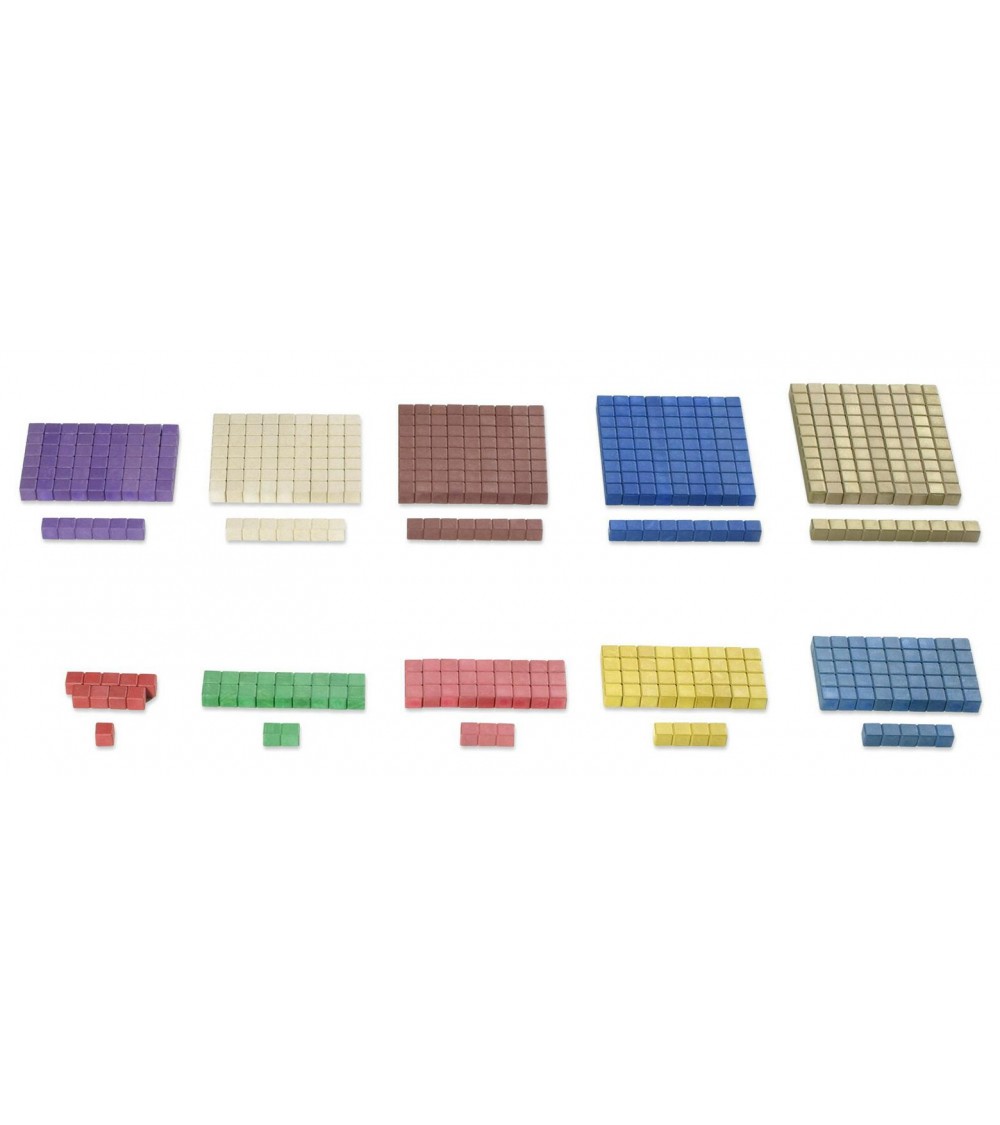Montessori sticks, cube material 1-10
€26.95
Tax included
Montessori slide sticks, cube material 1 – 10, 100 parts to be used like colored bead material
from recycling material, Made in Germany
The MontessoriPlus slide sticks correspond to the Montessori colors of the bead material. Addition and subtraction tasks are easily solved with the slide sticks. First experiences with the 1x1 series are collected.
Application, advantages, areas of application for this Montessori material:
Laying out and solving arithmetic problems
Get to know addition and subtraction
Getting to know the 1x1 rows
Made in Germany
For children from 4 years
Scope of the Montessori working material:
10 one red approx. 1 x 1 x 1 cm
10 pairs green approx. 2 x 1 x 1 cm
10 triples pink approx. 3 x 1 x 1 cm
10 fours yellow approx. 4 x 1 x 1 cm
10 fives light blue approx. 5 x 1 x 1 cm
10 purple sixes approx. 6 x 1 x 1 cm
10 sevens white approx. 7 x 1 x 1 cm
10 eights brown approx. 8 x 1 x 1 cm
10 nines dark blue approx. 9 x 1 x 1 cm
10 gold tens approx. 10 x 1 x 1 cm
1 guide
Material:
The slide sticks are made of RE-Wood®. RE-Wood® guarantees an excellent ecological balance with high operational safety and maximum strength. It consists of more than 80% pressed, ground wood waste (from certified sustainable forest management according to the PEFC system), a polymer additive and is 100% recyclable.
Instructions for the Montessori slide sticks
The slide sticks offer the ideal support for orientation in the number range up to 10.
The circumferential, milled subdivision of the sticks is particularly helpful when recording the structure of numbers or the composition of numbers.
Getting to know the chopsticks:
The slide sticks are arranged flush left from the bottom (smallest) to the top (largest) on the table. Now the sticks are counted one by one:
1st double crochet: one - 2nd double crochet: one, two...
Three-step lesson according to Montessori:
The slide sticks are on the table. For this exercise, three sticks are selected, e.g. 1, 2 and 3.
1st stage:
Take first slide stick, count (one) and name (that's the one)
Take second chopstick, count (one, two) and name (That's the two)
Take third chopstick, count (one, two, three) and name (That's the three)
2nd stage:
The number is given, the child shows the correct stick.
Please show me the three
Where is the one?
Please give me the two
3rd stage:
A slide stick is given, the child names it.
The 2-slide stick is selected (pick it up, point to it, etc.).
Which number is this?
The next double crochet is chosen.
What's this called?
The last double crochet is selected.
What is that?
Feel the slide stick:
Any slide stick is placed under a cloth. The child touches and names this. The cloth may be removed to check success. This exercise can later be performed with several chopsticks at the same time.
Matching Items:
Depending on the desired difficulty, this exercise can either be done with just a few (e.g. 1 to 5)
or with all slide sticks (1 to 10).
The slide sticks are laid out at a greater distance on the table or floor. Now the chopsticks can be assigned a corresponding number of objects, e.g.
1 stick – 1 ball; 2 sticks - 2 toy cars; 3 sticks – 3 buttons etc.
Recognizing predecessors/successors:
The slide sticks from 1 to 10 are laid out in order. Either left-aligned from bottom (smallest) to top (largest) or as a pyramid. Then one or more slide sticks are removed and the remaining sticks are pushed back together to close any gaps that have arisen. The child puts the missing chopstick(s) back in the right place and names them.
Adding or recognizing the composition:
Any slide stick is placed on the table. Which chopsticks together are the same size as this one? - The chopsticks are laid out.
Experience of the equivalence of inverse tasks in addition:
Any slide stick is placed on the table, e.g. the 7 - Which sticks together are the same size as this one? The child puts the 4 or 3 sticks under it. -
Four plus three is seven - Now the two bottom slide sticks swap places so that you now have 3 + 4. - Three plus four is also seven
Composition of the number 10:
The 10-stick is laid out on the table. First, the ones die is placed underneath. The adult asks: With which chopstick can we put the ten? - The child looks for the matching slide stick. Then the double stick is placed and the child looks for the right one. After the two 5-sticks, the already laid sticks are swapped so that 6+4, 7+3, 8+2 and 9+1 can also be played.
MVEM3712

